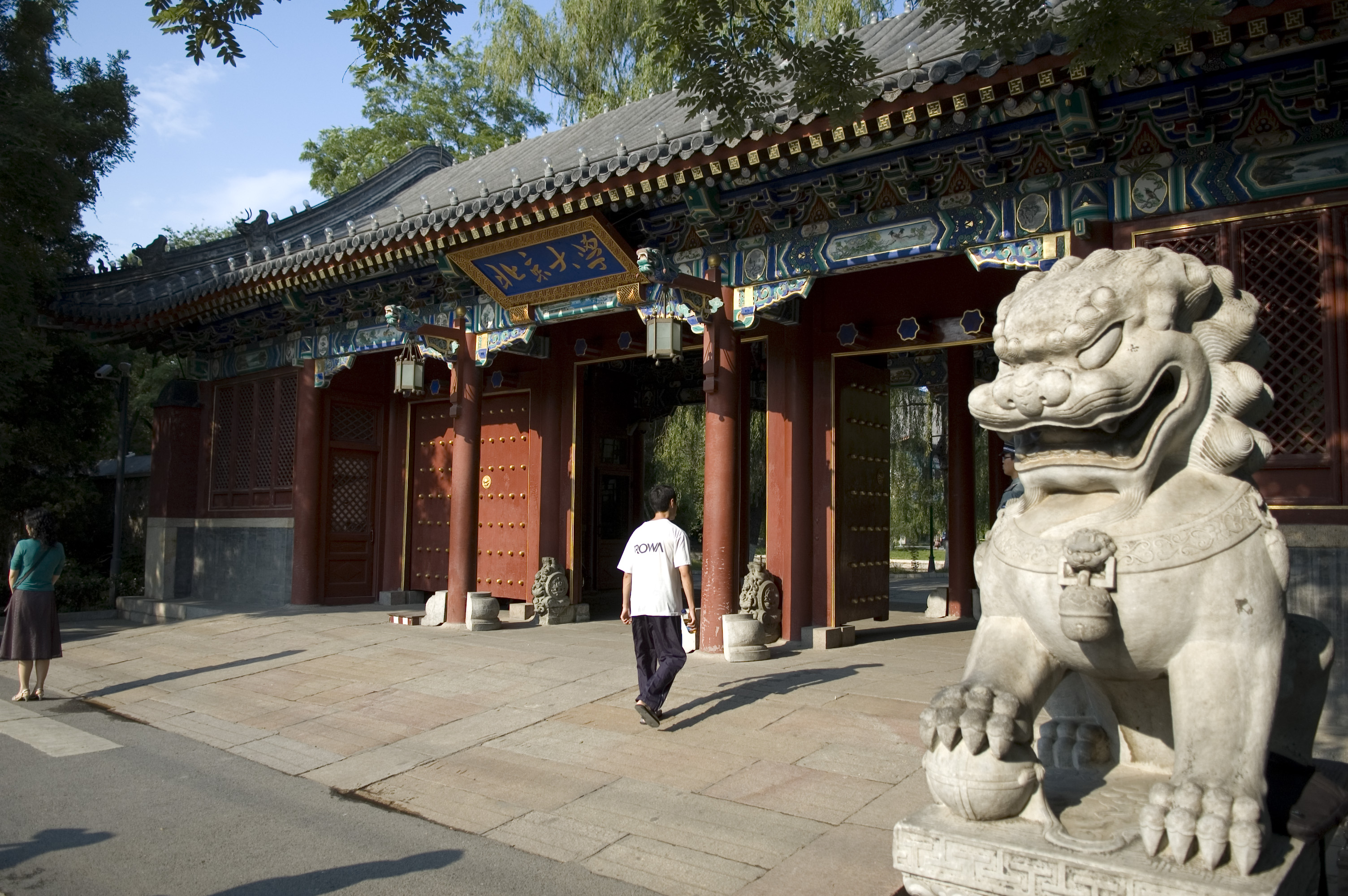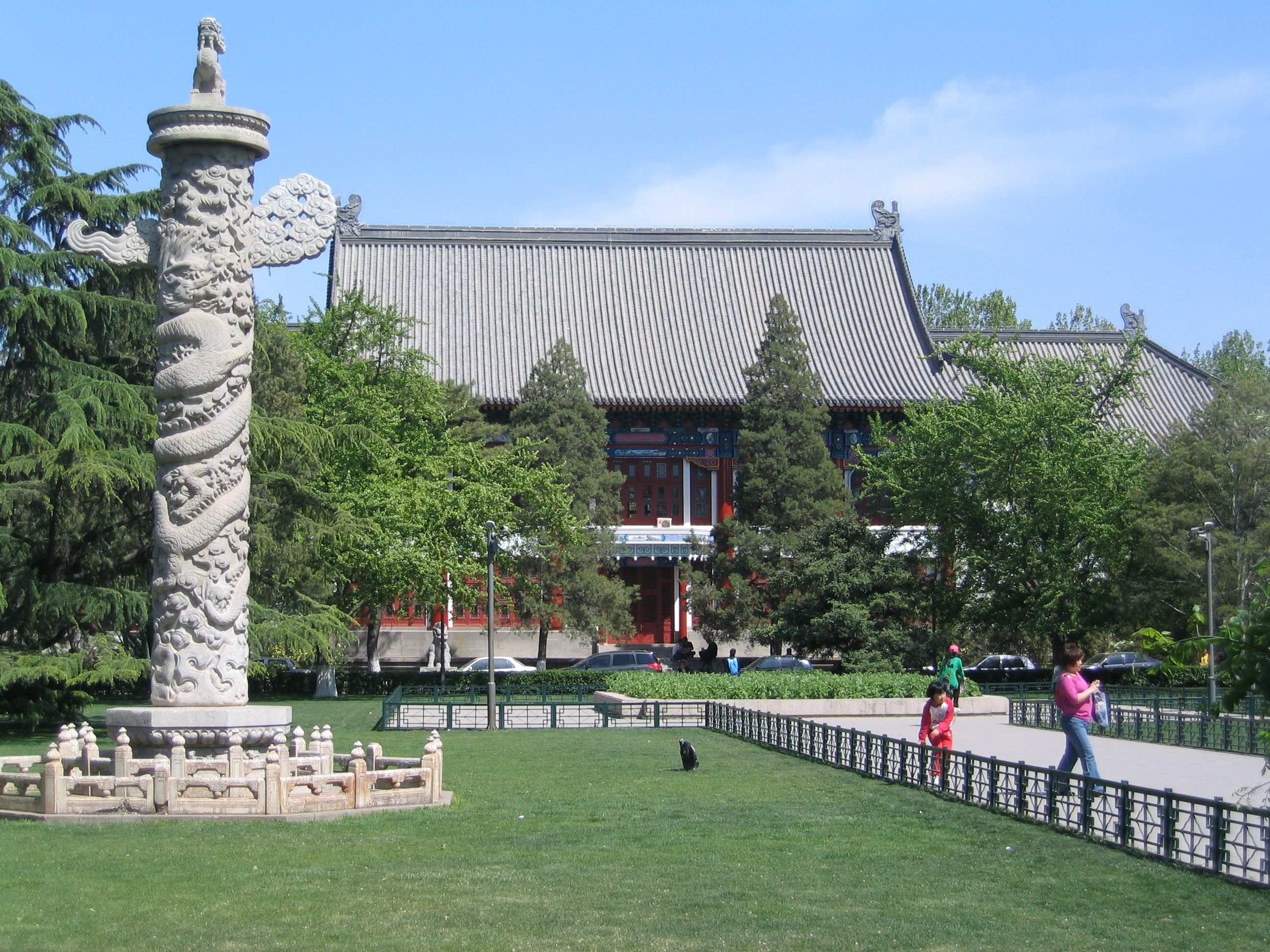Peking University
Template: Infobox university / professors missing
The Peking University (Chinese北京大学/北京大学, Pinyin Běijīng Daxue, English: Peking University), colloquially Beida (北大, Beida ), is the most prestigious university in the People's Republic of China. The Beida is often referred to by the Chinese as the Chinese Harvard. It lies to the northwest of Beijing (北京) in Haidian District, near the Old Summer Palace and close to the also prestigious Tsinghua University.
History
The university was founded in 1898 during the Hundred Days' Reform as Imperial University of Peking (京师 大 学堂), replacing the previously existing Guoziyuan, which was the highest educational institution for several centuries. In 1902 the Faculty of Education was relocated and formed the basis of the existing to date Normal University Beijing. In 1912 the university was renamed due to the Xinhai Revolution in National Peking University (国立 北京大学). The famous scholar Cai Yuanpei was appointed in 1917 to its rector, and had a large part in the Peking University has become China's biggest university. 1919 formed the core of their intellectual movement of the May Fourth, and a year later she became the second Chinese university, the students recorded.
After the outbreak of the Second Sino-Japanese War in 1937 and the growing control of Japan on the East China Peking University was forced to move to Changsha, where they formed the Temporary University in Changsha with Tsinghua University and Nankai University. In 1938, the institution moved to Kunming and was opened as a United Southwest University until the end of World War II. Then returned the three universities back to their original location. The Peking University was one of 3,000 students this time and included six faculties and an institute for the humanities. 1952 was the addition of " National " removed from the name, as in the People's Republic at this time, all universities were state-run. The Peking University also moved to the campus of the merged with her Yenching University.
The first riots of the Cultural Revolution began at the University in 1966, and until 1970 was the teaching activities to a halt. In 2000, the Beijing Medical University was merged into Peking University. In 2001 it opened a Graduate School in Shenzhen, where a 2004 Business School started its activities.
The University is a member of the university networks Association of Pacific Rim Universities ( APRU ), Association of East Asian Research Universities ( AEARU ) and BESETOHA (together with the Seoul National University, Tokyo University and Hanoi University ). Since 2006, the Peking University is one of them at the University Group International Alliance of Research Universities ( IARU ).
Schools and study
The Peking University is a National University of gravity of the People's Republic of China. It currently has 41 faculties. Bachelor's degree programs are offered for 101 subjects, master's degree programs exist for 244 specializations, in addition, the University has the right to confer doctoral degrees in most academic disciplines. You are connected over two hundred research institutes and centers. A total of about 30,000 students study at Beida. With 4.5 million volumes, it has one of the largest university libraries in Asia.
In the university rankings, the University is often among the top 50 universities worldwide again, so she took in 2013 in the QS ranking the 44th place. While the Tsinghua University is a leader in the technical subjects that Beida is considered the best university in the humanities and social sciences. The University is known for its contribution to modern Chinese literature, poetry and art, they published a number of seminal studies and books in this area. She also has a strong profile in the arts. Together with the University of Chicago, she built the Center for East Asian Art ( CAEA ) on. With UNESCO, she developed a department for digital art and design.
Campus
The Peking University is now located on the former site of the former Yenching University (燕京 大学yanjing Daxue ).
The campus can be basically divided into three areas: the southeastern part, where there are the teaching facilities, the southwestern part of the dorms and the northern area and the center, with the Weiming Lake ( Weiming Hu未名湖). On the southeast side of the lake is the so-called Porter Pagoda (博雅塔Boya ta).
In the area around the lake and in the field on the western side up to the western gate, it is highly vegetated (mostly with weeping willows ), and the buildings including the Di yi Tiyuguan (第一 体育馆, such as " first gym" ), preserving the traditional Chinese architectural style ( especially the northern and the southern pavilion ).
Well-known professors
- Wang Xuan (1936-2006), computer ( " Modern Bi Sheng " )
- Cai Yuanpei
- Chen Duxiu
- Vincenz Hundhausen洪涛生- Professor of German Literature, 1924-1937
- Li Dazhao
- Hu Shi
- Ma Yinchu
- Alexander von Staël -Holstein (1877-1937, 1918-1937 in Beijing), Tibetologist, Indologist, sinologist, phoneticians
- Luo Niansheng (1904-1990), Hellenist and philologist
Sports
In the sports hall of Peking University competitions in table tennis were held at the 2008 Summer Olympics and in the 2008 Paralympics.









